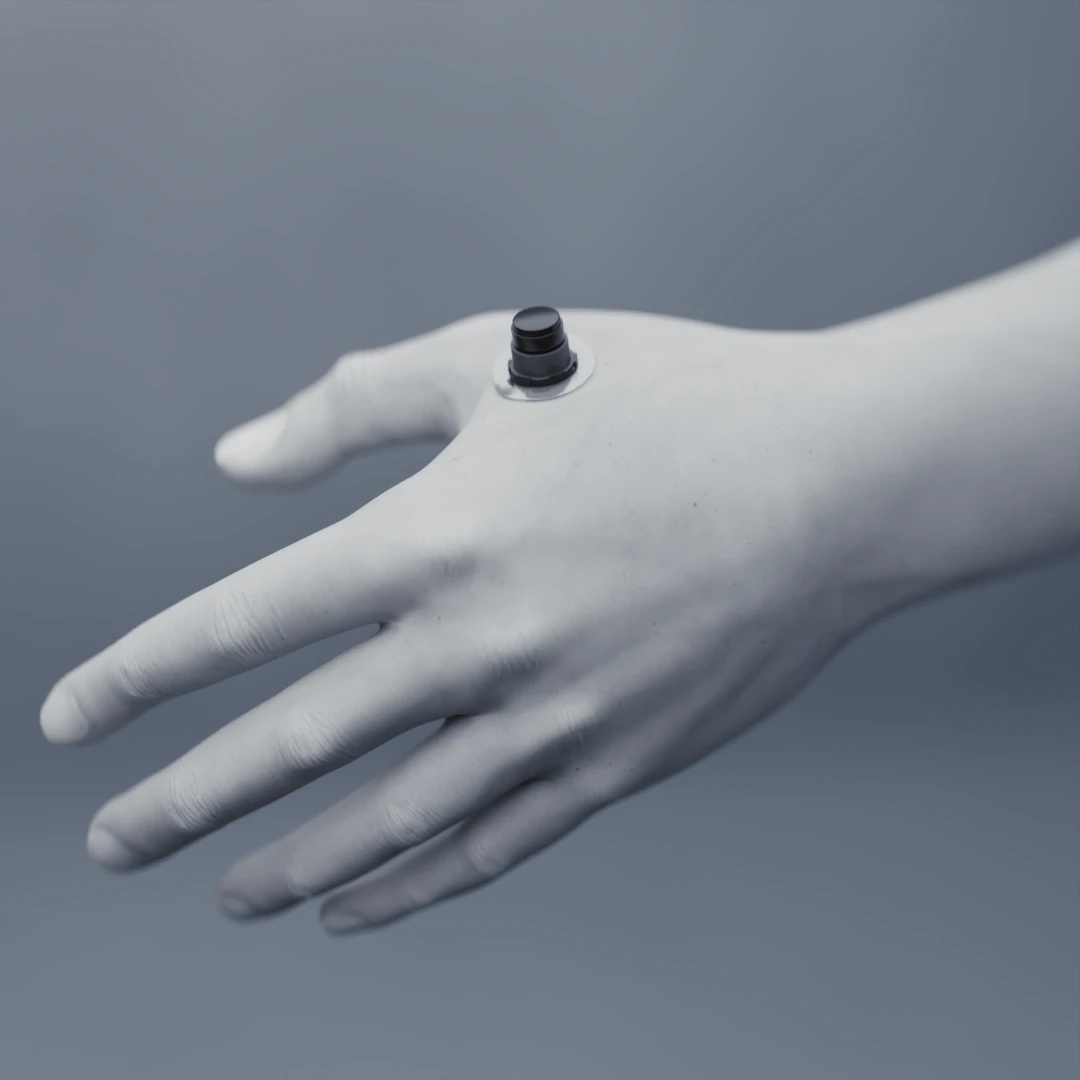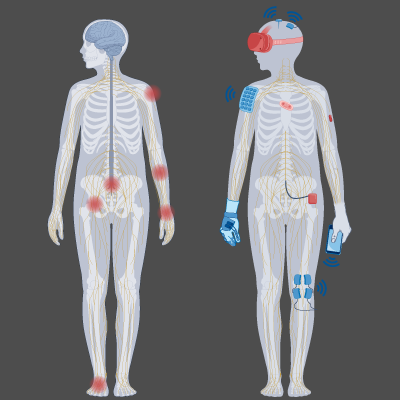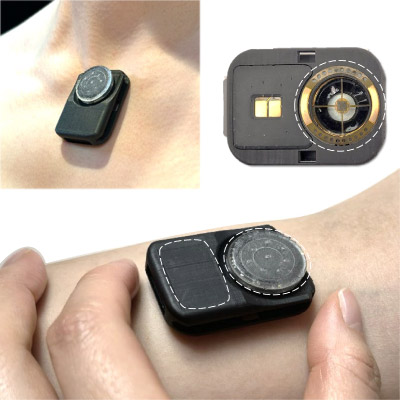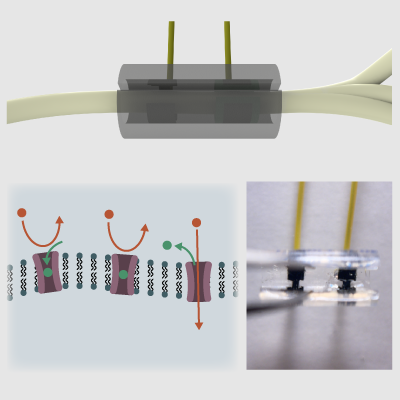Multisensory Haptic Engagement
Just as our eyes can combine red, green, and blue hues to produce color vision, our skin can perceive physical contact through the coordination of multiple discrete receptors. We have demonstrated a small-scale transducer capable of selectively engaging independent classes of mechanoreceptors. Untethered arrays of these transducers connect wirelessly to LiDAR as the basis for a visual sensory substitution system.
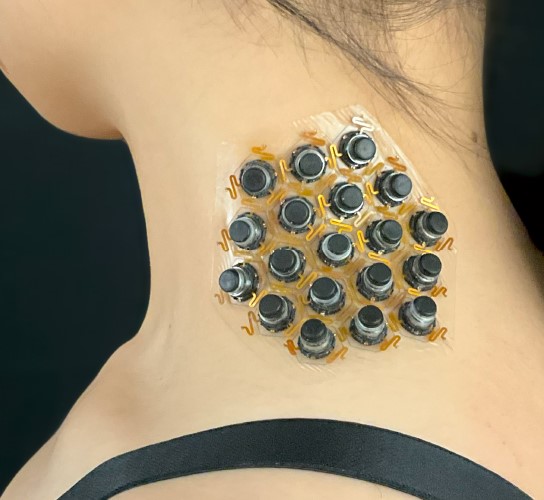
*Visualization by Gabriele Meilikhov (Muza Productions)
